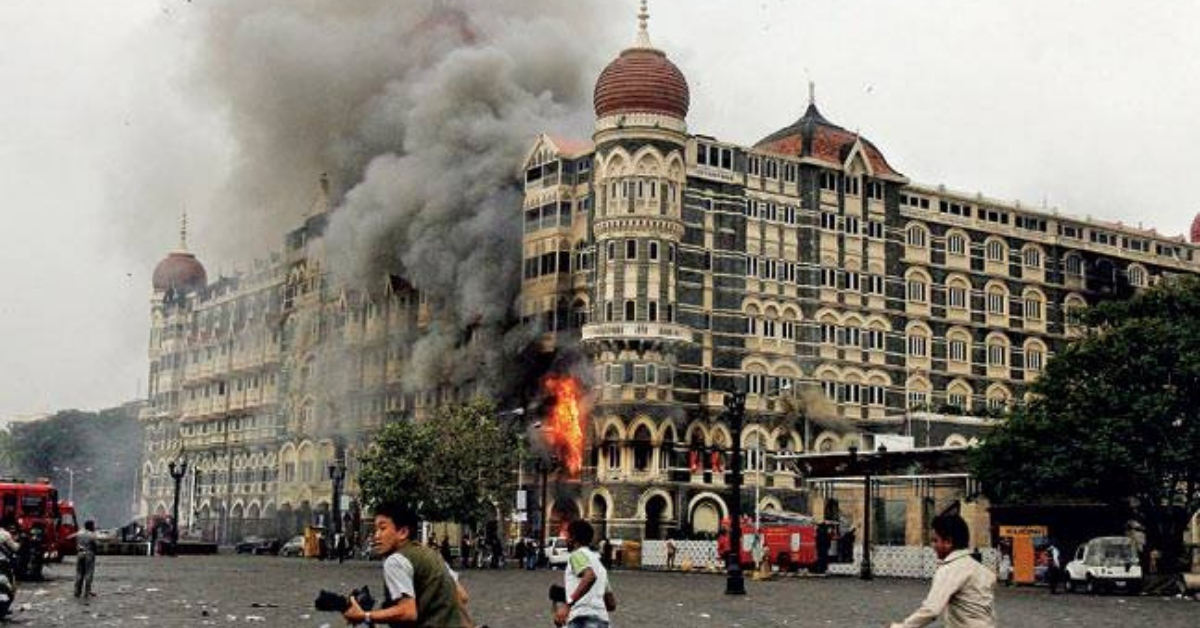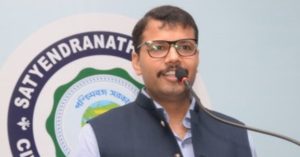26/11: Among the First to Enter the Taj, Brave Cop’s Crucial Help Aided Commandos!
"We are in the CCTV room [on] the third floor of Taj hotel. Terrorists are in room number 631. They came to the fifth floor also. We fired at them, so they went back to the sixth. I have 3-4 people with me. DCP Rajwardhan is also here. Please send assault teams,"

Ten years after Mumbai experienced the life-changing terrorist attacks on 26/11, The Better India pays homage to the heroes who fought bravely that day and their efforts to rebuild afterwards. #IndiaRemembers
The 26/11 Mumbai attacks are considered to be one of the most horrific acts of terrorism that the world has seen. While the memories of the bombings can never be forgotten, they also speak of real-life heroes whose lives have altered completely since.
For IPS officer Vishwas Nangre Patil, the night was filled with the horrors that he would have to brave along with his “ill-equipped and ill-prepared” team in an attempt to subdue the terrorists.
Patil was the Deputy Commissioner of Police (Zone 1) of Mumbai at the time of the attacks. As soon as he was informed about the firing at the Taj Mahal Palace Hotel, he rushed to the spot, and he was one of the first police officers to do so.
He was accompanied by DCP Rajyavardhan Sinha, who was his friend and the DCP of the special branch, a police constable, two hotel security guards and a journalist.
Speaking to The Better India, Patil, who is currently the Special Inspector-General of Kolhapur Police (IGP), said, “It was a fateful night. We finished the advance security liaisoning meeting regarding the PM’s scheduled visit on 28th July at hotel Trident at around 9:15 p.m.
I had just reached home when I received information about firing at the Leopold Cafe. Subsequently, I received a call about the Taj attack. I rushed and reached at around 9:51 p.m.

The terrorists had entered at around 9:40 p.m. and were killing people. I, along with my radio operator entered from the rear side with the security chief of Taj. We could see pools of blood and bodies lying in the swimming pool area. We heard gunshots and grenade blasts, people were being killed.”
A few months before the attacks, DCP Patil and DCP Sinha were Sinha were discussing the intelligence warnings about a possible attack in the city. And now, it was all happening right in front of their eyes.
As the diligent (former) DCPs began their search for terrorists and hostages, Sunil Kudiyadi, the hotel’s security manager, led the DCP to an area between the south and north wing of the Taj hotel.
The terrorists had secured themselves at the ‘royal staircase’ at the hotel, allowing them the perfect passage to fire and throw grenades at the police officers. Despite the odds stacked heavily against them, the police team, led by Patil, decided to move forward.
“The attack was planned, and the terrorists were armed with automatic weapons, grenades and RDX bombs. The police are generally prepared to handle law and order situations and handling such an unprecedented situation was challenging.
I had studied the topography of hotel Taj a month before in detail and had a security audit of the building. So, I could strategise and plan the operation accordingly,” he says.

“Patil led ill-equipped and ill-prepared men and shot a terrorist in battle inside the Taj Mahal Hotel. It was an act of exceptional courage, even by the standards of those days,” a report by the Ministry of Home Affairs had declared in 2013.
While all this was going on, the team was also desperately calling for back up. About half an hour after reaching the scene, Patil had contacted the South District Control room for the team. Massive confusion at the control office, about which building of the Taj they were supposed to reach—old or new—led to another 90 minutes wasted as the police officers tried to combat the situation and stay alive.
Recalling the events, the IGP told TBI, “I asked Sunil to take me the top, that is the sixth floor, from where better domination was possible. We went there but could not locate anyone as after our sudden retaliation they had entered north wing. We checked all the floors of the south wing for almost an hour. We thought they could escape and run away. But when we came down, we heard a deafening blast near the central lift. They were inside. Accompanied by three more officers and two constables, we again rushed to the top floor of the north wing as the south was already checked. But unfortunately, they had entered south wing after the grenade blast.
When I came down, I met my batchmate, Rajvardhan Sinha and we took a call to go to the CCTV room on the second floor. We could see the movement of terrorists on the sixth floor. So as per the instructions of seniors, we kept them pinned down by intermittent firing till 2:45 a.m. of 27/11.”
“We saw two of them first kicking on doors, then two more,” Nitin Kakde, a sub-inspector at that time told The Hindu.
By then, the terrorists had taken hostages and tied them up in a room. They were also firing at CCTV cameras, destroying them and limiting the visibility of the police officers who were monitoring their activity.
“We are in the CCTV room [on] the third floor of Taj hotel. Terrorists are in room number 631. They came to the fifth floor also. We fired at them, so they went back to the sixth. I have 3-4 people with me. DCP Rajwardhan is also here. Please send assault teams.” This was the message conveyed by Patil to the control room.
Even as Patil, Sinha and the rest were scanning the video footage, Sinha, who had connections with the Intelligence Bureau, was alerted about the terrorists targeting the CCTV room. A loud explosion at the Taj confirmed this information.
The false ceiling on the CCTV room came crashing down onto the team. Sinha and Patil managed to escape, but one of their subordinates was injured in the attack. Outside, the terrorists were making use of flammable furniture and decor to set the hotel ablaze. Even as the flames engulfed several rooms, the electricity went off, leaving the police officers stuck in pitch darkness and suffocating smoke.
In an interview to ABP Majha, Patil had said,
“Till 5:00 a.m. the next day, my wife wasn’t aware if I am alive or dead. By 3:00 a.m., the guard with me was hit with three bullets,”

“The time was very delicate. There was no question of whether I should go to Taj or not. The cacophony of the bullets and grenades showed that combating the terrorists was unavoidable. At this time, I decided not to contact my family. By the next morning, they had prepared for my funeral,” he adds.
But the cop wasn’t one to bow down. He persisted and fought till the navy commandos reached the Taj. That is when Patil was ordered to retire from the hotel even as the DCP suggested a joint operation between the two forces. “Don’t begin the operation with two agencies… Don’t do it with their and our commandos… The training is different. This will not be right,” was the order given.
“Our focus was rescuing people and keep the movements of the terrorists restricted to minimise damages till the specialised forces reach. So we along with Taj employees, we communicated through intercoms, walkie-talkies and mobile phones and gave information about the secured areas and exits. This helped in rescuing more than 600 people from the hotel till 3 am on 27/11,” he concludes.
There have been conflicting reports about Patil’s actions at the hotel. Some reports suggest that he had not shot a terrorist inside the hotel. Patil is also accused of fleeing the CCTV room – leaving behind the constable who had accompanied him.
Some argue that the choice “wasn’t unreasonably wrong,”
The purpose of this article is not to highlight the number of terrorists shot by Vishwas Nangre Patil. While being actively involved in the search and rescue of civilians, he was also actively looking to pin down the terrorists, and no one can deny the fact that he displayed immense courage on that fateful day.
For us, that is undoubtedly worthy of recognition.
(Edited by Gayatri Mishra)
Like this story? Or have something to share?
Write to us: [email protected]
Connect with us on Facebook and Twitter.
This story made me
-
97
-
121
-
89
-
167
Tell Us More
If you found our story insightful, informative, or even just enjoyable, we invite you to consider making a voluntary payment to support the work we do at The Better India. Your contribution helps us continue producing quality content that educates, inspires, and drives positive change.
Choose one of the payment options below for your contribution-
By paying for the stories you value, you directly contribute to sustaining our efforts focused on making a difference in the world. Together, let's ensure that impactful stories continue to be told and shared, enriching lives and communities alike.
Thank you for your support. Here are some frequently asked questions you might find helpful to know why you are contributing?



















